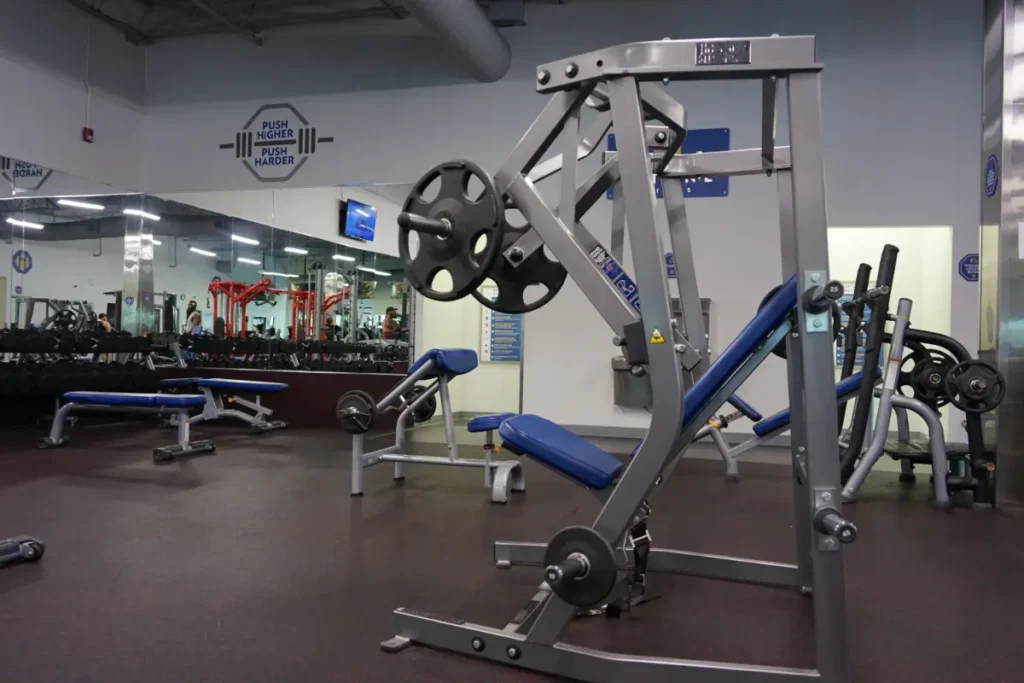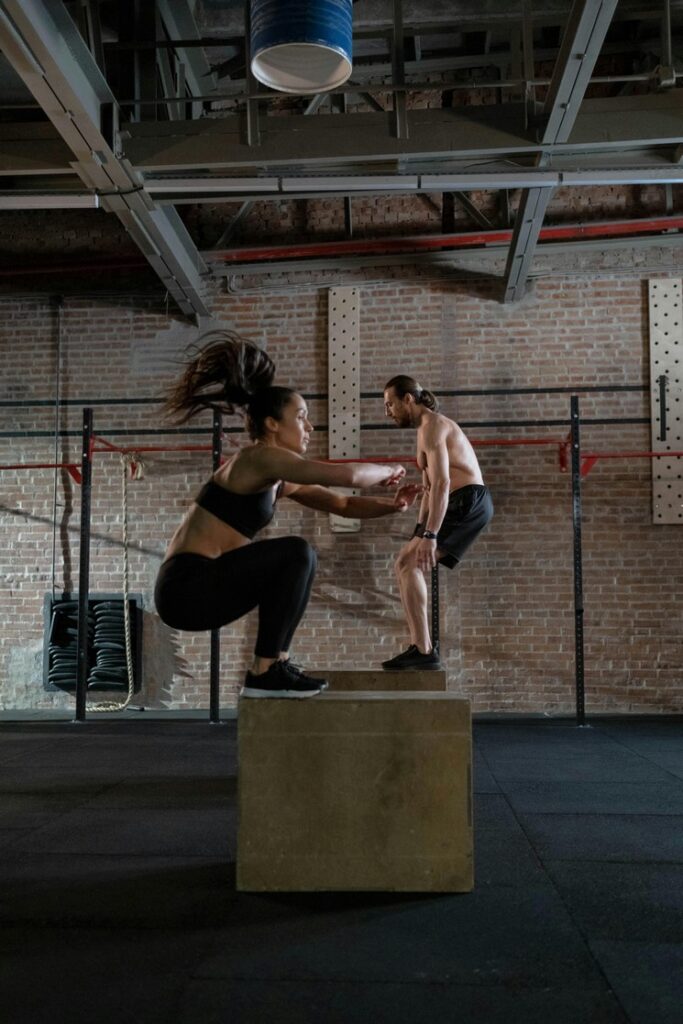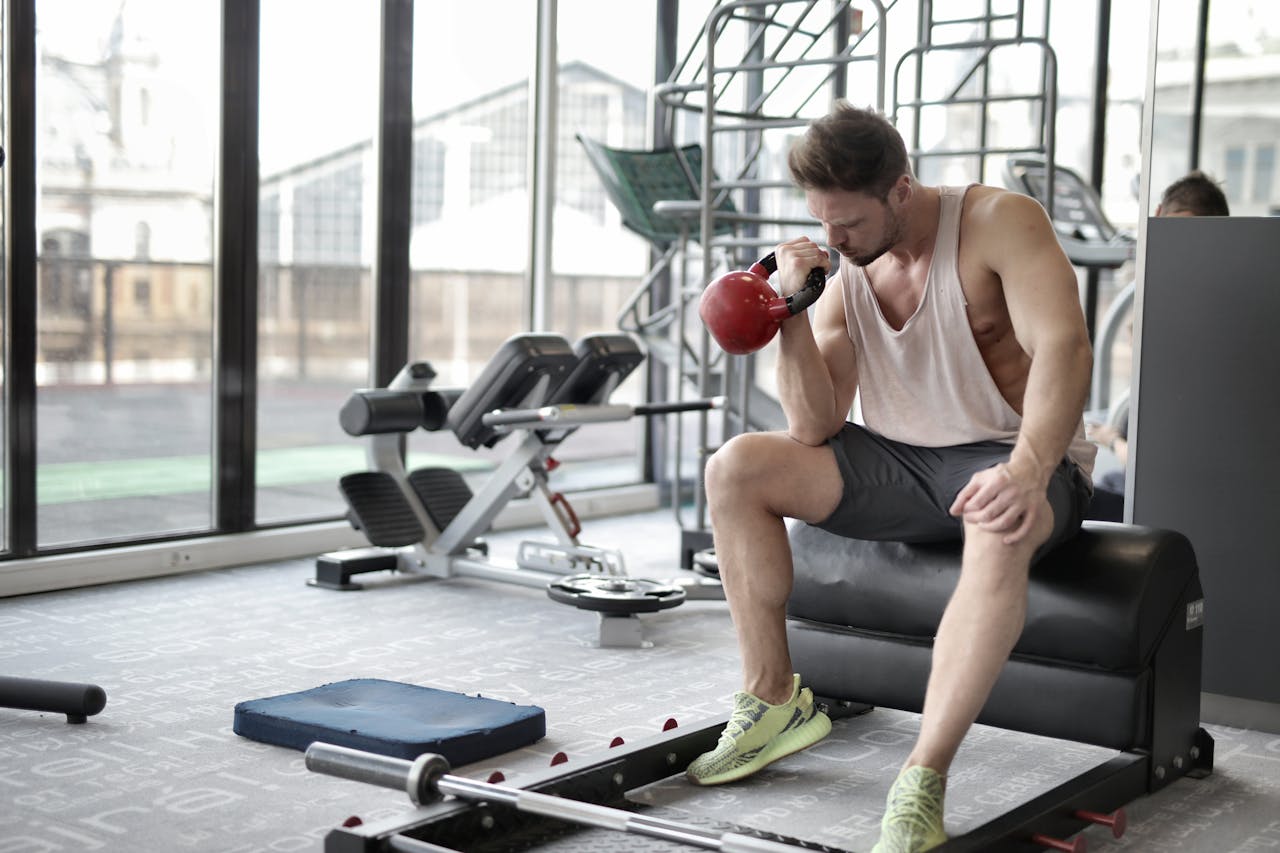Starting your fitness journey without a proper plan is like setting sail without a compass – you’re likely to end up lost, frustrated, and potentially even injured.
That’s why it’s crucial to have a beginner-friendly workout plan, one that’s tailored to your current fitness level and goals. A good plan will guide you, step by step, from where you are now to where you want to be, and it will do so in a way that’s safe, efficient, and enjoyable.
Luckily, you can find here the best workout routines depending on your goals. Let’s get started!
Why do you need a beginner-friendly workout plan?
A well-structured workout plan is like a GPS for your fitness journey. It guides you, step by step, toward your goals. Whether you’re aiming to lose a few pounds, gain some muscle, or just want to be active and feel more energized, a solid, beginner-friendly workout plan can help you get there faster. It’s like a roadmap to becoming an achiever in the fitness world.
Without a plan, you might find yourself wandering in the gym, not knowing which exercises to do, how many reps to perform, or even how to do them correctly. This can lead to wasted time, ineffective workouts, and even injuries. With a plan, you’ll know exactly what to do and when to do it, making your workouts more efficient and effective.
Another crucial benefit of having a beginner-friendly workout plan is that it can help prevent overtraining. As a beginner, it’s easy to get carried away and push yourself too hard, too soon. This can lead to burnout, fatigue, and injuries that can sideline you for weeks or even months. A good workout plan will ensure you’re challenging yourself, but also giving your body adequate time to rest and recover.
Finally, a workout plan can make your fitness journey easier to stick to. It takes the guesswork out of exercising and provides a clear path to follow. This can make your workouts feel less like a chore and more like a routine, making it easier to stay committed and motivated.
Some beginners have to factor in their weight into their workout regime. If that’s the case with you, check out this strength training guide.
What do you need to consider before creating your workout routine?
You need to get crystal clear on your fitness goals. Are you looking to shed some pounds? Gain muscle? Improve your cardiovascular health? Each of these goals requires a different approach to working out. For instance, if you’re aiming to lose weight, you’ll likely want to incorporate a mix of cardio and strength training into your routine. On the other hand, if you’re looking to build muscle, you’ll need to focus more on heavy lifting and resistance training.
Next, consider your current fitness level. Since you’re just starting, you’ll need to begin with lighter workouts and gradually increase the intensity as your fitness improves. This is important to prevent injuries and keep you motivated. Remember, it’s not about being the best, it’s about being better than you were yesterday.
You’ll also need to think about how much time you can realistically dedicate to working out each week. This will help you to create a routine that fits seamlessly into your lifestyle, making it easier to stick to and turn into a healthy habit.
Lastly, consider what types of exercises you actually enjoy. This might seem trivial, but enjoying your workouts is key to creating healthy habits and sticking to them long-term. If you hate running, for example, don’t force yourself to run. There are plenty of other ways to get in a good cardio workout.
As you can see, creating a workout routine that’s tailored to your unique goals, fitness level, and lifestyle is key to success. It’s all about setting yourself up to be the best version of yourself, not only physically but mentally as well.
Building a balanced physique requires proper shoulder development, so incorporate our essential shoulder exercises for beginners from day one.
Best workout routines for weight loss
If you’re on a mission to lose weight, there are a few workout routines that can be particularly effective.
1. High-Intensity Interval Training (HIIT)
This routine is a real game-changer for weight loss. It involves short, intense bursts of exercise followed by brief rest periods. A typical HIIT routine could look like this: 45 seconds of burpees, followed by 15 seconds of rest, then 45 seconds of jumping jacks followed by another 15 seconds of rest. Repeat this cycle with different exercises for about 15-20 minutes. This fat-burning routine not only helps to torch calories during the workout but also creates an afterburn effect, meaning you continue to burn calories even after your workout is over.
2. Running or jogging
This is a classic and effective routine for weight loss. It can be as simple as going for a 30-minute jog in your neighborhood or a more structured routine like interval running – sprint for one minute, then walk for two minutes, repeat. Running is not only a great fat burner but also an excellent stress relief exercise.
3. Circuit training
This involves doing a series of different exercises with little to no rest in between. A typical circuit might include push-ups, lunges, squats, jumping jacks, and sit-ups. You do each exercise for a certain amount of time or reps, move on to the next exercise with minimal rest, and repeat the circuit a few times. Like HIIT, circuit training is a great fat burner and can also act as stress relief as it keeps your mind engaged.
Here’s a 5-exercise circuit workout program ideal for beginners.
4. Yoga
While it’s not a major calorie burner, yoga is excellent for stress relief and can complement your other weight-loss efforts by improving your strength, flexibility, and mental well-being.
What is the recommended number of workouts per week?
For beginners, a good starting point is three workouts per week. This allows for ample recovery time in between sessions, which is crucial to prevent overtraining and injuries. Remember, your muscles need time to recover and grow after a workout. So, don’t neglect those rest days!
However, as your strength and endurance improve, you can increase the number of workouts per week. If your schedule allows, aim for four to five sessions per week. This could be a mix of different types of workouts – like strength training, cardio, and flexibility exercises – to ensure you’re getting a well-rounded fitness regimen.
Beyond structured workouts, it’s also beneficial to incorporate some easy physical activity into your daily routine. For example, you can aim to reach 5000-10000 steps per day. Walking is a low-impact exercise that can be easily incorporated into your day, whether it’s a brisk walk in the morning, a stroll during your lunch break, or an evening walk with your dog. Not only does it burn calories, but it also helps to improve cardiovascular health, boost mood, and provide a break from the sedentary nature of modern life.
Best workout routines for muscle growth
If your goal is to build muscle, several workout routines can help you make those gains. Here’s the lowdown on the best workout routines for muscle growth:
Whole body workout routine
A whole-body workout routine, also known as a full-body workout routine, is a great option for beginners and those with limited time. This type of routine involves working all major muscle groups in a single workout. You might do this routine two to three times per week, allowing for a day of rest in between.
A sample whole-body workout might look like this:
- Squats (Legs)
- Bench Press (Chest)
- Bent Over Rows (Back)
- Shoulder Press (Shoulders)
- Bicep Curls (Arms)
- Tricep Dips (Arms)
- Calf Raises (Legs)
The key to a whole-body workout is to focus on compound movements, which work multiple muscle groups at once. This allows you to get the most bang for your buck and build muscle efficiently.
5. Push-Pull-Legs
The push-pull-legs routine is a classic in the bodybuilding world and for good reason. It’s incredibly effective for muscle growth and also allows for adequate recovery time.
In this routine, you’ll divide your workouts into three types: push workouts (working the muscles used for pushing movements, like chest, shoulders, and triceps), pull workouts (working the muscles used for pulling movements, like back and biceps), and leg workouts. You might do each workout once or twice per week, depending on your recovery ability and schedule.
6. Customized split
A customized split routine involves dividing your workouts by muscle group. For example, you might do chest and biceps on day 1, back and triceps on day 2, and legs and shoulders on day 3.
This type of routine allows for more volume (i.e., more sets and reps) per muscle group, which can be beneficial for muscle growth. However, it requires more time commitment than the other routines and might be best for more advanced lifters.
Remember, the best workout routine for muscle growth is the one that you enjoy and can stick to consistently. Don’t be afraid to experiment with different routines and find the one that works best for you.
To that end, try these chest workouts for beginners.
Pro tips for first-timers
Start slow: Don’t dive headfirst into intense workouts. Begin with lighter exercises and gradually increase the intensity as your fitness improves.
Focus on form: Proper form is crucial to prevent injuries and make your workouts more effective. Don’t hesitate to ask a trainer for help or use online resources to learn the correct form.
Consistency is key: Regularity trumps intensity when it comes to fitness. It’s better to workout consistently at a lower intensity than to have sporadic, intense workouts.
Build mental strength: Fitness isn’t just about physical strength, it’s also about mental strength. Develop a positive mindset, set realistic goals, and celebrate your progress.
Nutrition matters: You can’t out-exercise a bad diet. Make sure you’re fueling your body with balanced, nutritious meals to support your fitness journey.
Stay hydrated: Water is your body’s best friend, especially during workouts. It helps to regulate body temperature, lubricate joints, and transport nutrients for energy.
Rest and recover: Your body needs time to heal and grow after a workout. Take rest days seriously and look for ways to speed up recovery, like stretching, foam rolling, and eating protein-rich foods.
Prioritize sleep: A peaceful sleep is just as important as diet and exercise when it comes to fitness. Aim for 7-9 hours of quality sleep each night to allow your body to recover and build muscle.
Listen to your body: If something hurts, stop. It’s important to distinguish between muscle soreness and pain. The former is a normal part of working out, the latter is a signal that something is wrong.
Enjoy the journey: Fitness is a marathon, not a sprint. Enjoy the process, be patient with yourself, and remember why you started.
Final thoughts
Whether your fitness goal is weight loss, muscle growth, or just general health improvement, having a well-structured workout routine can be a game-changer. Remember, a beginner-friendly workout plan isn’t just about the exercises you do; it’s also about building mental strength, speeding up recovery, and ensuring peaceful sleep.
Consistency is key in this journey, as is listening to your body and making adjustments as needed. It’s okay to start slow and gradually increase intensity. Most importantly, enjoy the journey and celebrate every small victory.







